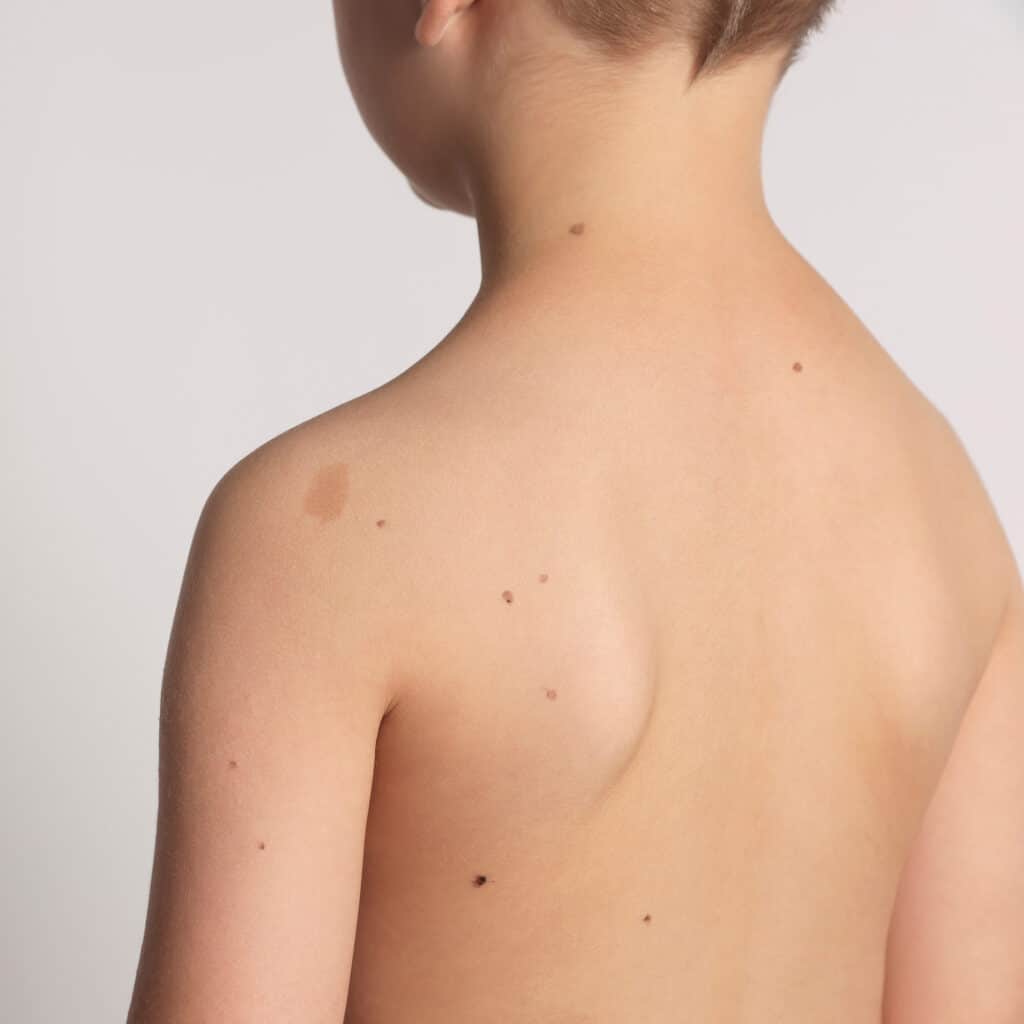Pediatric Services
While most birthmarks do not require medical treatment, some prominent birthmarks can impact a person’s confidence. The exact cause of birthmarks is unknown, but they can develop due to abnormal blood vessel formation, clusters of pigment-producing cells, genetic factors, or underlying medical conditions. Hence, there are several types of birthmarks, including:
- Vascular birthmarks: hemangioma of infancy, port wine stain, and nevus simplex.
- Melanocytic: congenital melanocytic nevi and café au lait spots.
- Nonmelanocytic: nevus sebaceous and epidermal nevi.
Depending on the type of birthmark, our experts may recommend treatment options such as medication, laser therapy, or surgical removal. Laser treatments can shrink blood vessels to reduce the appearance of vascular birthmarks, while medications can help shrink certain types like hemangiomas. Surgery physically removes the birthmark.
Our experts harness the power of cutting-edge laser and energy-based devices to delicately address scars stemming from a myriad of sources -burns, traumatic or physical injuries.This innovative approach avoids the need for traditional invasive surgeries, delivering superior outcomes for our young patients.Through the expert application of these revolutionary techniques, customized to the unique needs of young member, we are able to dramatically minimize the appearance of even the most severe scars, helping our young members regain confidence, self-esteem, and the freedom to enjoy their childhood without the physical and emotional burdens of disfiguring scars.
Acne is a very common skin condition. It primarily affects children and young adults between the ages of 11 and 30, typically beginning during puberty. However, acne can occur at any age and has various forms that can impact newborns, infants, young children, and adults.
While acne is most commonly associated with puberty, it is rare in children under 7 years old. Adolescence is the greatest risk factor for developing acne, and a family history can increase the risk of severe acne.
Neonatal acne affects an estimated 20% of newborns, presenting as whiteheads, blackheads, and inflammatory lesions on the face and upper body. It is more common in boys and does not usually result in scarring. Infantile acne, though rare, can occur in infants up to 16 months old and may cause scarring. Mid-childhood acne is very uncommon and warrants consultation with an endocrinologist to rule out underlying hormonal issues.
Acne can have significant emotional and psychological impacts, including problems with self-esteem, depression, anxiety, and even suicidal thoughts. Severe or long-term acne may also lead to permanent scarring. Overall, acne is a complex skin condition that can affect individuals of all ages.
Moles on a child’s skin are generally harmless and not a cause for concern. New moles commonly appear during childhood and adolescence as the child grows, and existing moles may naturally get bigger, darken, or lighten. While these changes are typically normal, a dermatologist should evaluate any worrisome moles to rule out melanoma, a rare but treatable form of skin cancer. Performing regular skin checks and teaching children to monitor their moles can help instill lifelong healthy skin habits.
Alopecia (hair loss) can stem from several conditions including autoimmune disorders like alopecia areata, endocrine issues such as hypothyroidism, or common temporary causes like newborn hair shedding and friction baldness. Other factors include tight hairstyles causing traction alopecia, nutritional deficiencies, stress-induced telogen effluvium, fungal infections (tinea capitis), or trichotillomania, where children compulsively pull their hair. Whatever the cause, our experts are here to provide expert diagnosis, effective and innovative treatment options to restore both hair growth and confidence of our young members.


